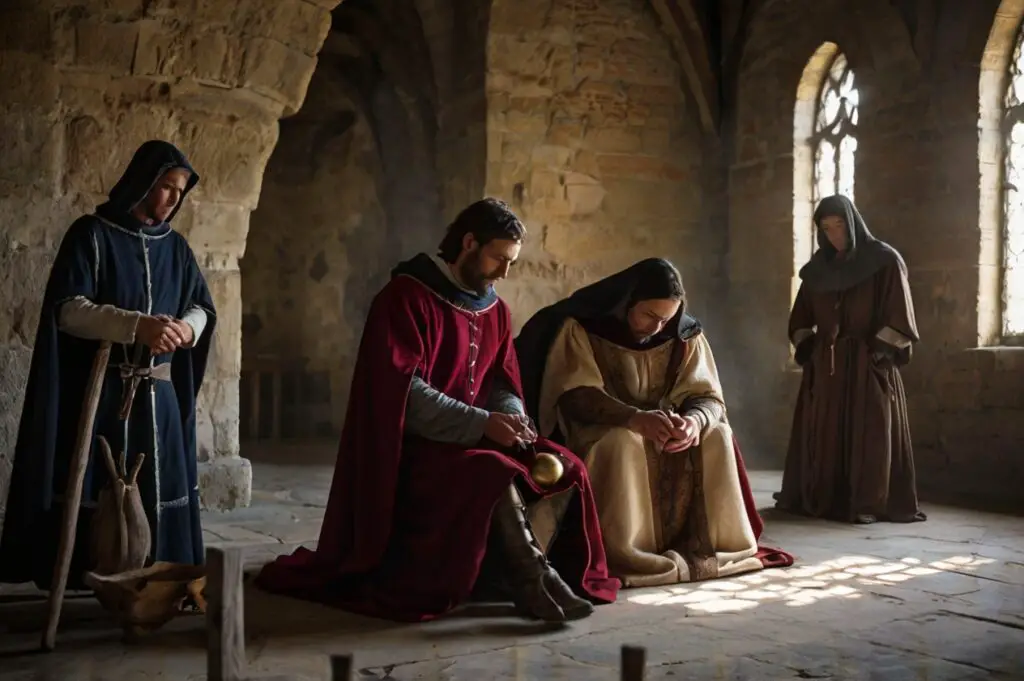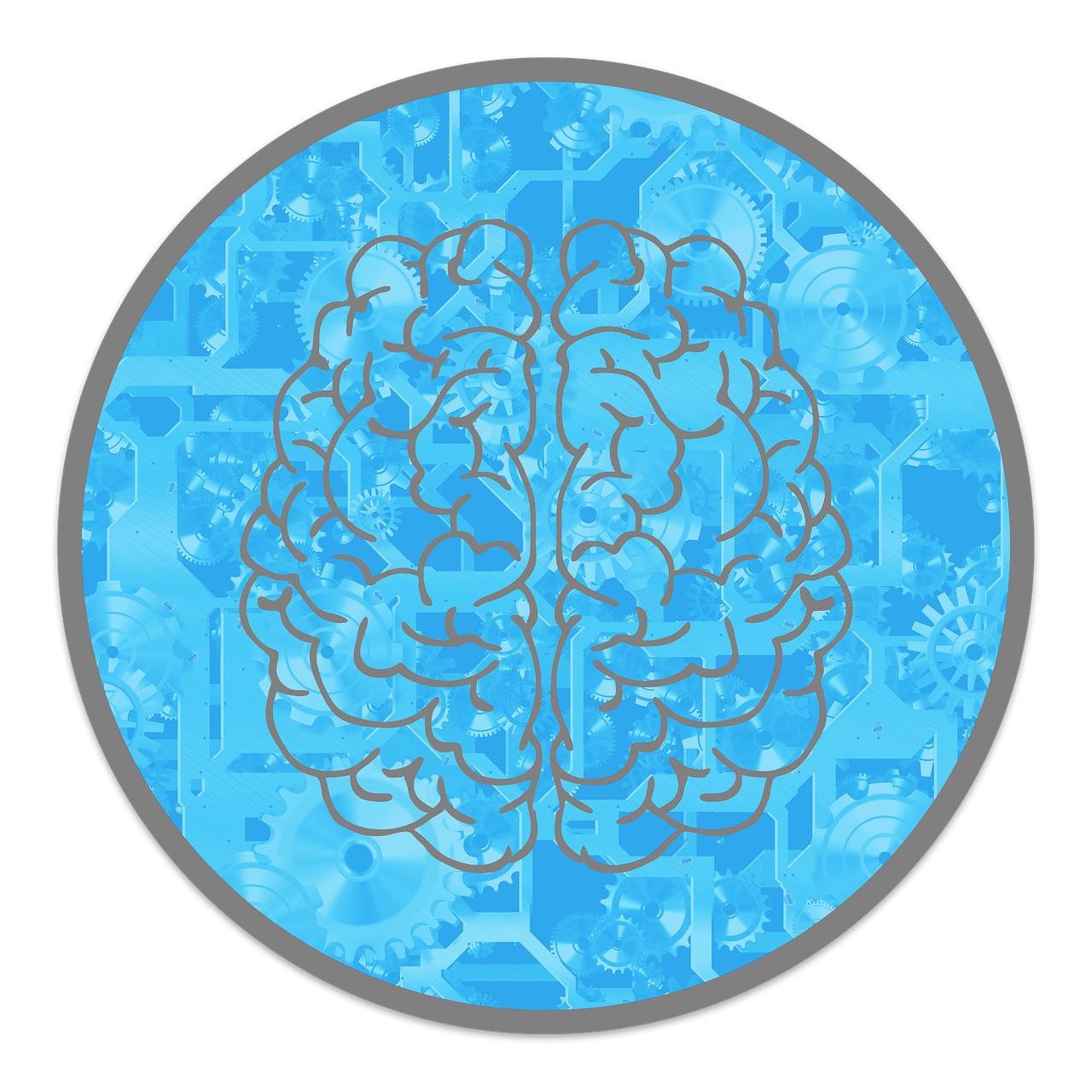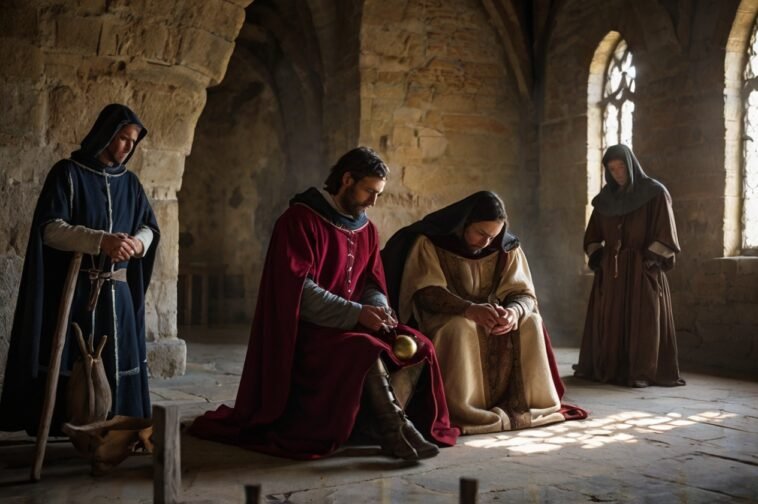
The medieval era was a time of wonder and fear, where the boundaries between reality and superstition were often blurred.
With limited scientific understanding and a deep reliance on faith, people turned to magic, astrology, and occult practices to make sense of the world.
These beliefs not only shaped daily life but also influenced art, literature, and medicine.
The Medieval Mindset
The medieval mindset was shaped by a combination of fear, faith, and a deep desire to make sense of a world that often felt mysterious and unpredictable.
Here’s a closer look at what influenced this way of thinking:
Limited scientific understanding
During the Middle Ages (around 500–1500 CE), the scientific knowledge we have today simply didn’t exist.
People didn’t understand natural events like storms, diseases, or eclipses, so they often attributed them to supernatural forces.
Without tools like the scientific method, many turned to mystical explanations to fill in the gaps of their knowledge.
- Read also: Unveiling the Mysteries: Exploring Medieval Era Facts and Beyond
- Read also: Medieval Era Inventions: Shaping the Past and Influencing the Future
The church’s influence
The Catholic Church was a central part of life during this time, providing moral guidance but also instilling fears of the devil and the threat of eternal damnation.
While the Church condemned many forms of magic as heresy, it also allowed certain mystical practices, like astrology, as long as they aligned with Christian beliefs.
Fear and uncertainty
Life in the medieval period was tough, with plagues, famines, and wars being common occurrences.
This harsh reality led many to feel fear and uncertainty about the future.
In response, people often sought comfort and protection through charms, prayers, or rituals.
Superstitions gave them a sense of control in a world that felt chaotic and unpredictable.

Magic in Medieval Life
Magic played a significant role in medieval society, with people turning to it for everything from healing to protection.
It existed in many different forms, some simple and others more complex, and was deeply woven into daily life.
Types of magic
Natural magic
This type of magic focused on using natural elements like herbs, stones, and plants for healing or protection.
It was closely tied to early forms of science and medicine.
Herbalists or wise women were often the ones practicing natural magic, helping their communities with remedies for ailments and offering guidance on how to use nature’s resources for good.
Ceremonial magic
Ceremonial magic was much more complex and involved detailed rituals to call upon angels, demons, or other spirits.
These practices were often carried out by scholars, clergy, or those who had access to special books of magic known as grimoires.
This type of magic aimed to gain knowledge, power, or even influence over supernatural forces.
Folk magic
This was the magic practiced by everyday people, particularly peasants.
It included using charms, amulets, or simple spells to protect against evil or attract good luck.
Passed down through generations via oral traditions, folk magic was widely practiced across rural communities.
Magicians and practitioners
Magicians in the medieval world were often seen with a mix of admiration and fear.
Some were respected as healers or wise figures, but others were accused of practicing sorcery or dark magic.
Women, in particular, were vulnerable to accusations of witchcraft, often facing persecution due to their association with magical practices.

Astrology’s Popularity
Astrology, the belief that the positions of the stars and planets influence our lives, was widely practiced during the Middle Ages.
It shaped everything from medicine to personal decisions, and here’s why it was so influential:
The influence of Ptolemy’s Tetrabiblos
One of the key texts that shaped medieval astrology was Tetrabiblos, written by the ancient Greek scholar Ptolemy.
This book laid out the idea that planetary alignments could affect everything from the weather to a person’s personality traits, and it became the foundation for astrological thinking during medieval times.
Astrology and medicine
In the medieval period, doctors often used astrology as a tool to diagnose and treat patients.
They would consult astrological charts to determine the best times for treatments or to understand the influence of celestial bodies on a person’s health.
The position of the stars was believed to affect bodily humors, a central idea in medieval medicine.
Astrology in everyday life
Astrology wasn’t just for doctors or scholars—it played a practical role in daily life.
People would consult astrological charts to decide the best times to plant crops, start a journey, or even choose the right day for a wedding.
Rulers and leaders also relied on astrologers to guide decisions about war, politics, and state matters.

Other Occult Beliefs
Alongside magic and astrology, medieval society was filled with a wide range of supernatural beliefs that helped people make sense of the world around them.
Here are some of the most common ones:
Alchemy
Alchemists were fascinated by the idea of transforming base metals like lead into gold and discovering the secret to immortality.
While their practices are often seen as mystical or even mythical today, alchemy played a crucial role in the development of modern chemistry.
Alchemists laid the foundation for scientific exploration, even if their goals were often more spiritual than practical.
Dream interpretation
Dreams were thought to be powerful messages, either from the divine or from deep within the subconscious.
Many people believed that interpreting dreams could reveal important insights about the future or a person’s life.
Books like The Dream Book of Daniel offered explanations for dream symbols, guiding people on how to interpret their nightly visions.
Omens and portents
People in the Middle Ages were quick to see signs in the natural world.
Events like comets, eclipses, or unusual weather were often believed to be omens or portents—warnings of significant events to come.
For instance, a comet might be seen as a sign of the death of a king, or an eclipse could signal a coming disaster.
Belief in supernatural beings
Fairies, demons, and spirits were thought to live alongside humans, influencing events in the world.
These beings were believed to cause everything from lost objects to sudden illnesses.
Many people turned to prayers, charms, or rituals to protect themselves from these invisible forces, fearing their influence on everyday life.
The Witch Hunts
The fear of witches reached its peak in the late medieval period, leading to widespread witch hunts.
Women accused of practicing dark magic were often subjected to brutal trials and executions.
The infamous Malleus Maleficarum (1487), a guidebook for identifying and prosecuting witches, fueled hysteria.
Historians estimate that tens of thousands of people were executed during the witch trials in Europe.

The Decline of Superstition
As Europe moved from the medieval period into the Renaissance and Enlightenment, superstition gradually started to fade.
Several key events and changes in thinking contributed to this shift:
The rise of rationalism and science
In the 16th and 17th centuries, the Scientific Revolution brought new ways of understanding the world.
Pioneers like Galileo Galilei and Isaac Newton used observation, experimentation, and reason to explain natural phenomena.
Their discoveries challenged the supernatural explanations that had previously dominated thinking and opened the door for a more evidence-based approach to understanding the world.
The reformation
The Protestant Reformation in the 16th century played a significant role in questioning established traditions, including the Catholic Church’s endorsement of certain mystical practices.
With leaders like Martin Luther challenging the Church’s authority, people began to rethink the importance of rituals, magic, and superstitions.
As religious ideas became more focused on personal faith and scripture, belief in supernatural forces began to lose its grip.
- Read also: Unlocking the Gates of Knowledge: Education in The Medieval Era
- Read also: Unveiling the Tapestry: Medieval European Societies
Final Thoughts
The rise of medieval superstition reflects humanity’s deep desire to understand and control the world.
While many of these beliefs now seem outdated, they were a natural response to the uncertainties of the time.
Today, the legacy of medieval superstition lives on in literature, folklore, and even modern practices like astrology and alternative medicine.
By studying these beliefs, we gain insight into the fears, hopes, and creativity of our ancestors.



